A lot of people can handle some minor component replacement. When you’re going a bit deeper on a custom bike ie. replacing the sub-frame, removing the airbox and side covers you need a little understanding of your motorcycle electrics. You’re going to need to do a fairly substantial re-wire. Old wiring looms are renowned for their problems and if you ask anyone who’s been there a total re-wire is your best option.
This guide will aim to give you some knowledge on the crucial components of your motorcycle electrics and help you select the right motorcycle parts. what they do and how they do it. In a later post, I’ll tackle re-wiring your bike, I’m still putting the simplified PDF wiring diagrams together.
My old man always told me, the best way to begin to fix something is to understand what it does. Firstly what does it do and second how does it do it. He also said if you can’t explain something in one sentence, you probably don’t know yourself. Here goes.
Electrical components
Stator-
The Generator for your motorcycle electrics. This provides the charge from your rotating crankshaft to the bike and battery. Simply put it rotates a magnetic component around a wire wound basket and produces power. Normally located on the left of the engine.
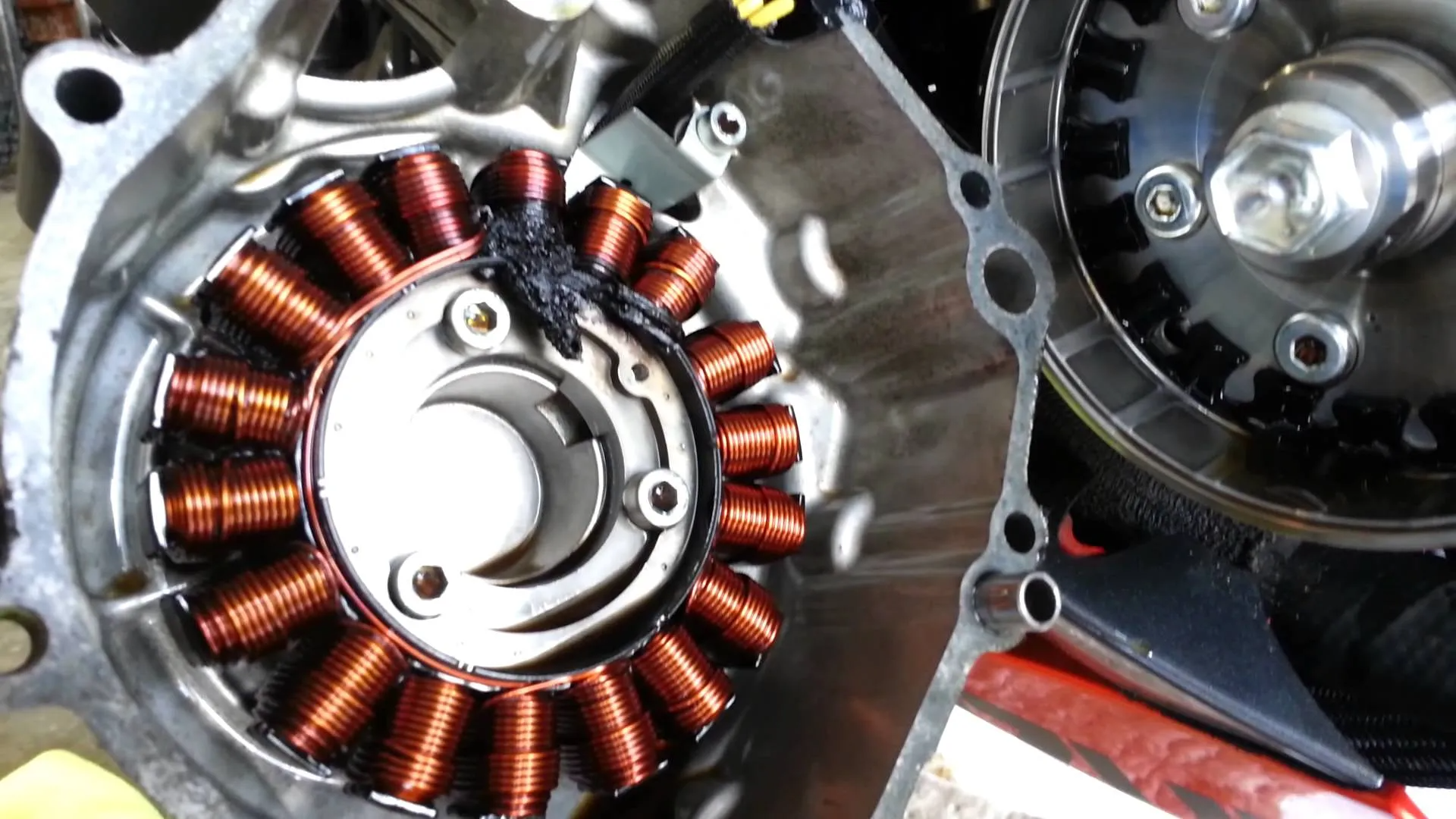
Regulator/rectifier-
Receives the AC charge from your stator, converts it to a clean DC to charge your battery, at between 13.5-14.5 v normally. If it hasn’t been replaced already get a new high-performance one. The original reg/rec on your bike wasn’t great to start with and if it’s 20+ years old, spend the money (they’re cheap) and get a replacement. Lithium batteries will not hold up under a shitty charging system, be warned.
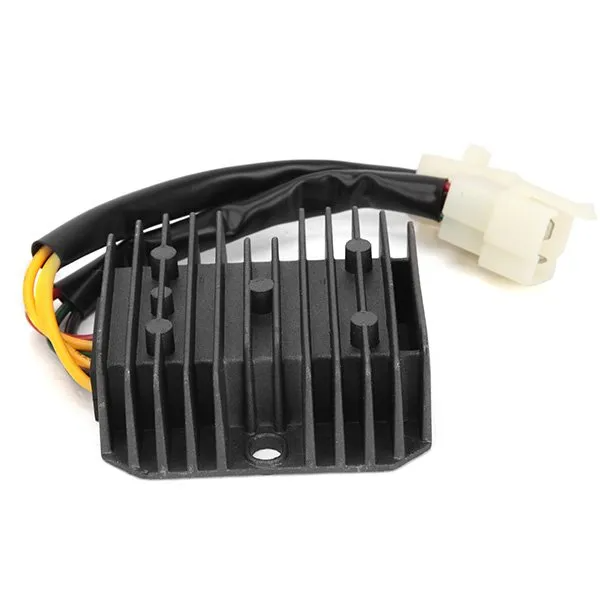
Ignition switch-
Your keyhole, this is the first stop for your battery and cuts power to everything bar your starter relay. Minimum of 2 positions, first provides power to your lights and accessories second provides power to your coils and starter circuit. Check out the Purpose Built Moto handlebar switches now available in our store
Points/pulse generator –
Normally on the right side of the engine. This provides the timing for your Coils and spark plugs the pulse generator sends a signal to the CDI. Old bikes had magnetic points that wear out, you can replace them with a Dyna digital ignition which is highly recommended. Shown is a Yamaha RD engine where it’s located on the left side.
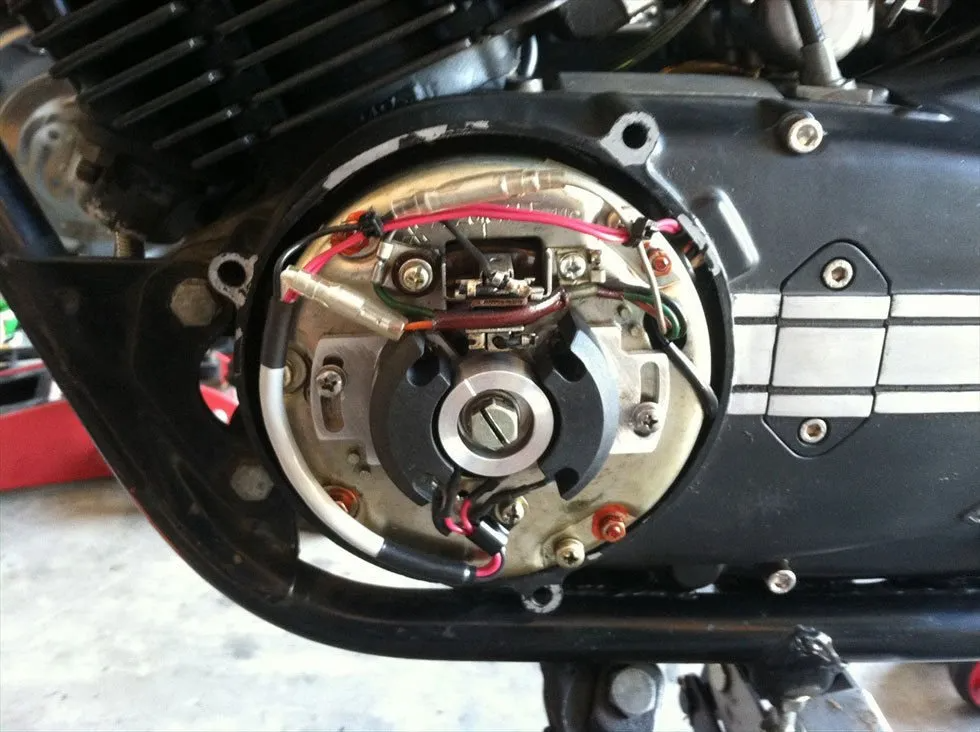
CDI or Capacitive Discharge Ignition-
This stores a charge from your battery in a capacitor, when the pulse is received from the points it sends a high power signal from that capacitor to the coils. If your bike is running horribly and nothing seems to be wrong with it, chances are it’s your CDI. These can be very hard to test though so chase down all other options before replacing it.
Coil-
These receive the signal from your ignition, amplify it and send the fire down the wire to your spark plugs.
Starter relay-
The starter relay takes a small signal from your button and closes a heavy duty switch, this pushes the high current to your starter motor. Your starter motor draws a lot of power, if all that power went through your start button it would melt and blow up.
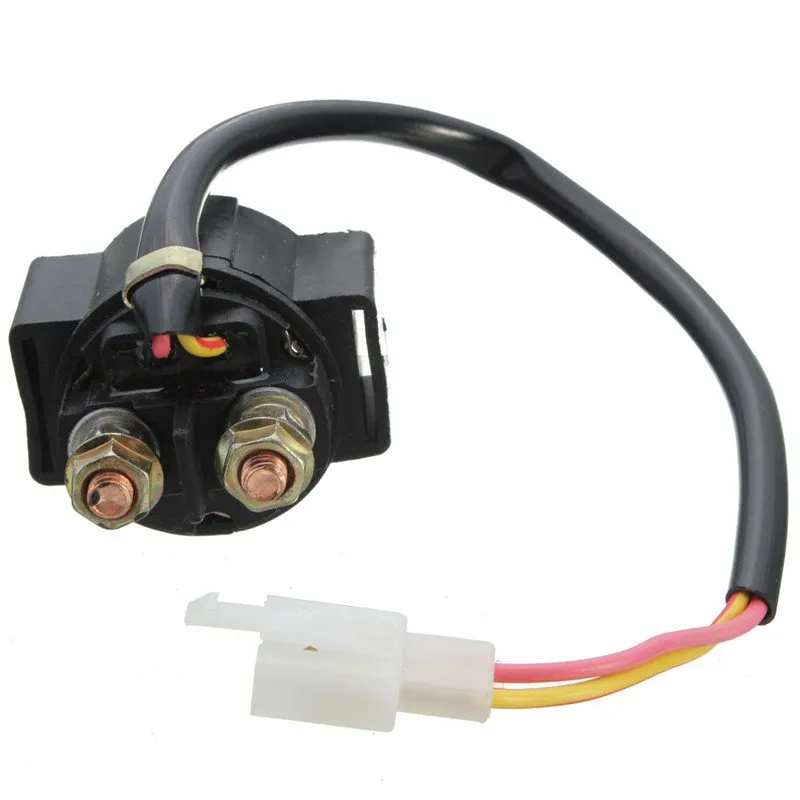
Starter Motor-
Exactly what you think it does, This is the opposite of your stator, you feed it power, it will rotate and start your engine.
Indicator flasher relay-
In times of old, these were analogue timing circuits, with a capacitor. Your indicator flashes on, draws 30-46 watts and slowly charges the capacitor, once charged it turns your indicator off and repeats. With new LED lights, they draw 3-6 watts, this charges your capacitor a lot faster. This results in a very quick flash or a flicker in some cases, adding a load balancing resistor slows this back down to a normal pace. Newer flasher relays use MOSFET switching which is a digital solid state unit that is not load dependant and will flash at the same rate regardless of what lights you use. Purpose Built Moto has a flasher unit for use with handlebar pushbutton and LED indicators, it also runs your hi/lo beam using MOSFET switching.
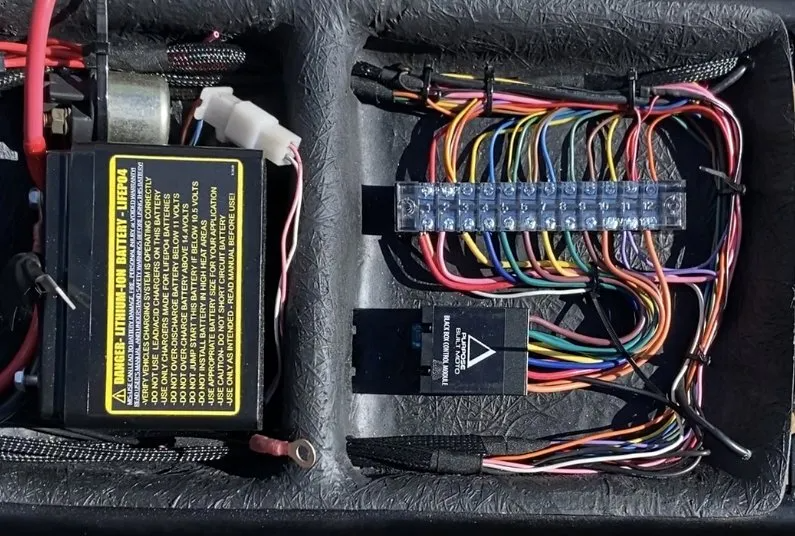
Fuses
these protect your wiring from catching fire if overloaded or damaged. ever see a bikes wiring smoke up? The fuse probably blew and the genius just put a bigger fuse in it, it’s important to get your fuse rating right. Now you can get some really great 12v circuit breakers too which I tend to use on my builds, instead of replacing the fuse when there’s an issue you can reset it once the problem is fixed. If you don’t have an original wiring diagram to show the fuse rating I’ll show you how to work out your fuse rating too:
The formula is Power (watts) = Volts x Current (amps)
Or- Current (amps) = Power (watts) ÷ Volts
For a rough example, if you have 80w low 100 watt high beam 4 x 10 watt indicators and a 40 watt brake/tail light plus 20 watts of other lights.
You’ll have:
100+80+40+40= 260 watts
260 watts ÷ 12 volts= 22 amps maximum, use a 20 amp fuse or Circuit breaker.
Hopefully, you’ve picked up some knowledge and with knowing these few things, you’ll get a better understanding of what you’re doing when re-wiring your bobber or café racer.
Leave a comment below and sign up to our newsletter for our re-wiring tutorial and diagrams to be released soon.
Thanks for taking the time.
Tom.
WE BUILD BIKES WITH PURPOSE.
Purpose Built Moto is home for unique custom motorcycle builds. We offer a unique motorcycle customizing experience in the heart of the Gold Coast.

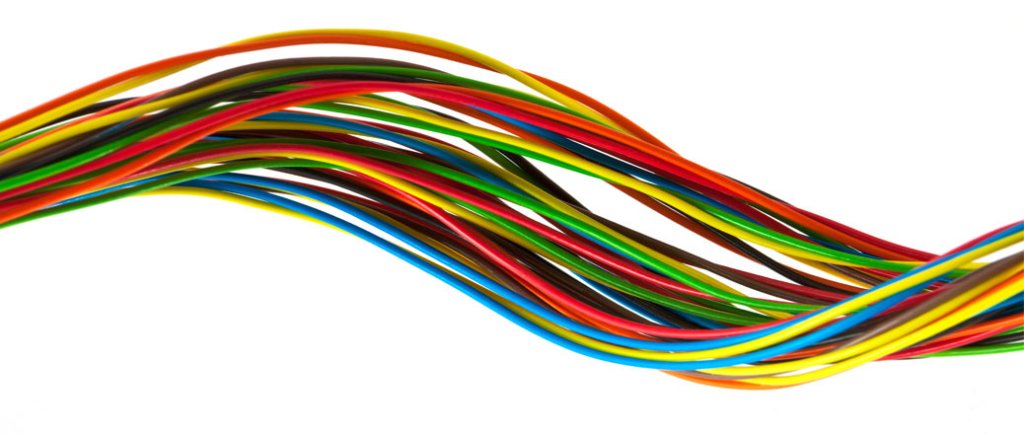



31 comments
There’s a complex answer to this simple question.
The gauge of wiring is dependant on the load on the circuit.
Check out our other motorcycle electrics blogs for more detail on this problem.
Hello,
First of all: Great site! Thanks for the tutorials. I’m starting to convert my Suzuki GN125 to a tracker and all these tutorials will be very usefull.
I’m going to rewire the whole bike. But one important question is still unanswered; “Which electribal cable thickness should I use in mm2 for the wiring?” My battery is a 12V8A gel battery.
Thanks
Wim
Hi Fred,
Glad to hear you’re getting into your bike. All good questions to ask.
When you hear that you need and “upgraded” reg/rec that just means a replacement. The old regulators have a habit of spiking the voltage that will ruin the lithium battery.
Just buy a new replacement for your specific bike model and don’t get the cheapest option. You should pay between $70-100 I would think.
Plug that in and your lithium battery will stay happy.
Tom
Hi guys,
Maybe you can help me.
I’m thinking of upgrading my 1978 xs250 to a lithium ion. I keep hearing you also have to upgrade you rectifier and resistor, no where can I find any specific information on what these upgrades are/specs they need/if they are compatible with my bike.
I’m a complete novice, Its a very simple bike, just bought on gum tree, its my first cafe racer, already been stripped back nicely. I’ve upgraded it from points to elec ignition and would like to do a couple of ground up improvements to it before I start dropping handlebars and sorting the seat loop….
It hasn’t got indicators so thats why I’ve been looking into the electrics, and the seat loop etc is related to that.
Can you help? Or send me to somewhere that can?
Anything would be appreciated.
Many thanks,
Fred.
Thx, great content.
Hey Shane,
Glad you’re getting a bit of value from these posts! thanks for the feedback.
I don’t know of any direct for electrosport, However I am a dealer of Ricks Motorsport electrics that also sell high quality gear. If you can find the part you need from them I’d be happy to help you out.
Tom.
G’day Tom, great site and projects, thanks for being generous with your knowledge/experience.
I am hoping to take your advice re updating my Reg/rectifier on my Guzzi v65 project and wondering if you know of any Australian distributors of electrosport components?
Best wishes
Shane A